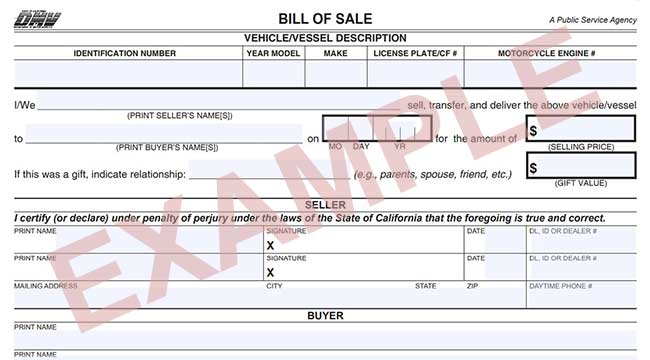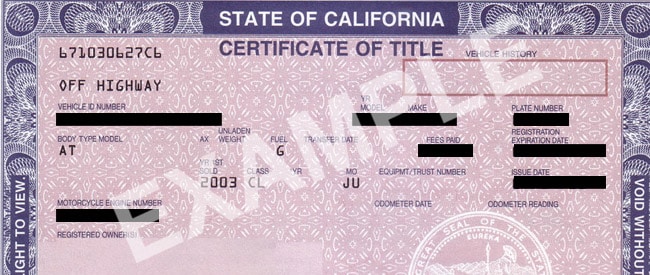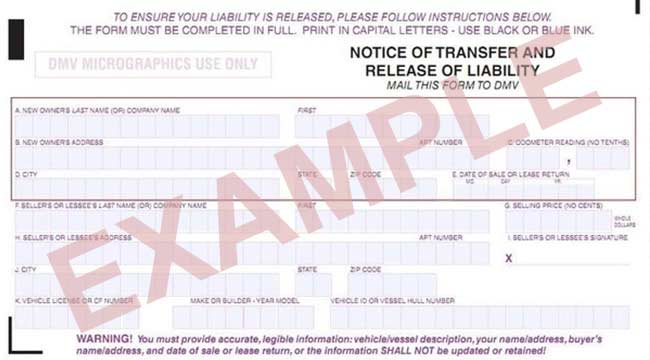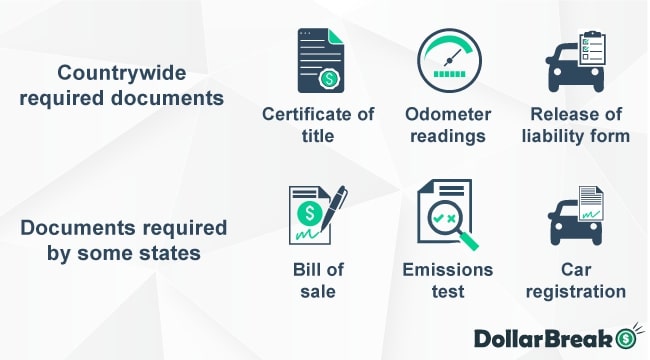Quick Answer:
Selling a car out of state requires several key steps, including securing the buyer’s license, agreeing on a payment method, and preparing necessary documents such as the bill of sale and title.
It’s also crucial to sign the release of liability form, remove license plates if needed, arrange for the vehicle’s shipping or pickup, and cancel any existing insurance on the car.
Key Takeaways:
- Proper Documentation: Prepare all necessary paperwork as mandated by the regulations of both the seller’s and buyer’s states.
- Secure Payment: Insist on accepting only certified checks, bank wire transfers, or money orders. Sign a Bill of Sale for added security.
- Title Transfer: Ensure you transfer the Title only after signing the bill of sale and confirming receipt of payment.
Best for Older & Damaged Cars

Buys used, damaged or junk cars
Free tow and no hidden fees
Pays by ACH trasfer or check
Top Pick for Junk Cars

Free, no-obligation cash offers
Offers free paperwork service
Pays on the spot upon pick up
My Experience Selling a Car Out of State
In 2020, I fixed a damaged 2015 Honda Civic with 50,000 miles and decided to sell it on eBay Motors for $11,000.
Within a week, I got an offer of $9,000 from a trusted buyer from California and agreed to proceed with the sale.
Things I did to sell a car out of state:
- Researched the paperwork requirement in both my and the buyer’s states
- Got an emissions test required by the buyer’s state (paid $100)
- Got a temporary tag (drive away permit for 30 days for $9)
- Received the payment from the buyer
- Signed Title and Bill of Sale and sent documents to the buyer (via mail)
- Filed a Title transfer form and provided the required paperwork (at DMV)
- Signed the Release of liability form
- Agreed upon vehicle pickup (funded by buyer)
- Canceled my vehicle insurance
The whole paperwork process took about 14 days as I needed to send the original paperwork to the buyer via mail.
Steps to Sell a Car Out Of State
1. Ask for a Copy of the Buyer’s License
When selling a car out of state, it is important to take a copy of their driver’s license. This will help you to verify their identity and avoid scams.
- Make sure that the driver’s license is valid and unexpired.
- Get the buyer’s consent to take a picture/copy.
- Take a copy of the front of the driver’s license.
Having a copy of the buyer’s driver’s license also comes in handy if you need to fill out the title transfer paperwork and the buyer is not available at the moment.
2. Agree Upon a Secure Payment Method
Agreeing upon a secure payment method is essential, especially when selling out of state. This means using a method that protects you from fraud and ensures you will receive the full payment for the car.
Secure payment methods:
- Certified check
- Bank wire transfer
- Money order
Avoid payment methods that carry a high risk of fraud, such as personal checks or money orders from unfamiliar banks. Before proceeding, confirm with your bank the expected clearing times for the chosen payment method.
3. Prepare Documents Required by Both States
The main distinction between selling a car within your state and selling it to an out-of-state buyer lies in the documentation required. You’ll need to provide the required paperwork as mandated by both your and the buyer’s state of residence.
Countrywide required documents:
- Certificate of Title
- Odometer readings
- Release of Liability form
Documents required by some states:
- Bill of sale (i.e., Louisiana, Montana, West Virginia, Pennsylvania)
- Valid emissions test (i.e., California, Georgia, Ohio, Nevada, Colorado)
- Valid car registration (i.e., Arizona, Florida, Indiana, Nebraska)
Average prices of additional paperwork required in some states:
| Document | Price |
|---|---|
| Bill of Sale | $15-$50 |
| Emissions test | $10-$40 |
| Registration tag | $10-$150 |
* All fees vary depending on the state and might change depending on your county or car type.
Important note: Colorado, Hawaii, Maine, Missouri, Montana, Nebraska, Nevada, West Virginia and Wyoming require the Bill of Sale to be notarized.
4. Sign the Bill of Sale

Even if states don’t require the document, it is advised to sign the Bill of Sale as it serves as both a legal contract and a record of the transaction between the buyer and the seller.
It should include the following information:
- The names and addresses of the buyer and seller
- The make, model, year, and VIN of the car
- The purchase price of the car
- The date of the sale
Both the buyer and seller should sign the bill of sale.
5. Transfer the Title

Title transfer consists of 3 steps:
- The seller signs the Title and adds odometer readings and the sale price.
- The buyer takes the Title to the state office (often DMV) and provides the required documents (provided by the seller).
- DMV issues new Title and registration.
To sign a car title, you will need to follow the instructions on the title. The specific instructions may vary depending on the state, but here are some general tips:
- Sign your name clearly and legibly.
- Sign the original Certificate of Title (copies not allowed).
- Make sure that your signature matches the signature on your driver’s license.
- Only sign the space marked for the seller.
- Do not use a stamp or facsimile of your signature.
States that require notarized titles: Montana, Arizona, Oklahoma, Ohio, North Carolina, Pennsylvania
6. Sign the Release of Liability Form

After the sale, it’s essential to sign a Release of Liability form. This document provides a record indicating that you have sold the car and are no longer responsible for what happens to it.
Generally, the form should be submitted to your state’s DMV shortly after the sale.
If you fail to fill out the Release of Liability form:
- The buyer may be able to sue you for damages if they are involved in an accident or if the car has any problems.
- You might be held responsible for traffic violations, accidents or criminal activities involving the vehicle.
- You might be held responsible for paying parking tickets, toll violations or other fines.
- If the vehicle is involved in an accident or incurs damages after the sale but is still technically registered in your name, you could face complications with your insurance provider.
7. Remove License Plates (if required)
In most states, you are required to remove the license plates upon selling your vehicle. Doing so ensures that you’re not held liable for any incidents involving the vehicle after the sale.
These plates can either be transferred to another vehicle you own or returned to the DMV.
States Where License Plates Stay with the Vehicle:
- Alaska
- California
- Minnesota
- Utah
In all other states, you must remove the plates.
8. Arrange Shipping or Pickup
Once the sale is finalized and all paperwork is in order, the next logistical step is to arrange for the vehicle’s delivery to the out-of-state buyer.
The buyer will typically bear the shipping costs, but it’s crucial that both parties are clear about the details to avoid misunderstandings or delays.
When arranging transportation:
- Confirm the shipping timeline so you can be available.
- Confirm correct pickup and drop-off locations.
- Make sure the company offers insurance coverage for the vehicle during transit.
9. Cancel Your Insurance
Once the car has been sold, you will need to cancel your insurance. You can do this by contacting your insurance company and providing them with the date of the sale.
Here are some additional tips for canceling your insurance:
- Make sure that you cancel your insurance as soon as the car has been sold. This will help to avoid any unnecessary charges.
- Keep a copy of the cancellation documentation for your records. This will help to prove that you have no further liability for the car.
Documents You Need to Sell a Car Out of State

| State | Required documents |
|---|---|
| Alabama | Title, Odometer, Release of Liability, Bill of Sale (some counties) |
| Alaska | Title, Odometer, Release of Liability, Bill of Sale |
| Arizona | Title, Odometer, Release of Liability |
| Arkansas | Title, Odometer, Release of Liability |
| California | Title, Odometer, Release of Liability, Emissions test |
| Colorado | Title, Odometer, Release of Liability, Bill of Sale (notarized) |
| Connecticut | Title, Odometer, Release of Liability, Bill of Sale |
| Delaware | Title, Odometer, Release of Liability |
| Florida | Title, Odometer, Release of Liability, Bill of Sale |
| Georgia | Title, Odometer, Release of Liability, Bill of Sale, Emissions test |
| Hawaii | Title, Odometer, Release of Liability, Bill of Sale (notarized) |
| Idaho | Title, Odometer, Release of Liability, Bill of Sale |
| Illinois | Title, Odometer, Release of Liability |
| Indiana | Title, Odometer, Release of Liability, Bill of Sale |
| Iowa | Title, Odometer, Release of Liability |
| Kansas | Title, Odometer, Release of Liability |
| Kentucky | Title, Odometer, Release of Liability |
| Louisiana | Title, Odometer, Release of Liability |
| Maine | Title, Odometer, Release of Liability, Bill of Sale (notarized) |
| Maryland | Title, Odometer, Release of Liability |
| Massachusetts | Title, Odometer, Release of Liability |
| Michigan | Title, Odometer, Release of Liability |
| Minnesota | Title, Odometer, Release of Liability |
| Mississippi | Title, Odometer, Release of Liability |
| Missouri | Title, Odometer, Release of Liability, Bill of Sale (notarized), Emissions test |
| Montana | Title, Odometer, Release of Liability, Bill of Sale (notarized) |
| Nebraska | Title, Odometer, Release of Liability, Bill of Sale (notarized) |
| Nevada | Title, Odometer, Release of Liability, Bill of Sale (notarized) |
| New Hampshire | Title, Odometer, Release of Liability |
| New Jersey | Title, Odometer, Release of Liability |
| New Mexico | Title, Odometer, Release of Liability |
| New York | Title, Odometer, Release of Liability, Bill of Sale |
| North Carolina | Title, Odometer, Release of Liability |
| North Dakota | Title, Odometer, Release of Liability |
| Ohio | Title, Odometer, Release of Liability, Emissions test |
| Oklahoma | Title, Odometer, Release of Liability |
| Oregon | Title, Odometer, Release of Liability |
| Pennsylvania | Title, Odometer, Release of Liability |
| Rhode Island | Title, Odometer, Release of Liability, Bill of Sale |
| South Carolina | Title, Odometer, Release of Liability |
| South Dakota | Title, Odometer, Release of Liability, Bill of Sale |
| Tennessee | Title, Odometer, Release of Liability |
| Texas | Title, Odometer, Release of Liability |
| Utah | Title, Odometer, Release of Liability |
| Vermont | Title, Odometer, Release of Liability, Bill of Sale |
| Virginia | Title, Odometer, Release of Liability |
| Washington | Title, Odometer, Release of Liability, Bill of Sale |
| West Virginia | Title, Odometer, Release of Liability, Bill of Sale (notarized) |
| Wisconsin | Title, Odometer, Release of Liability |
| Wyoming | Title, Odometer, Release of Liability, Bill of Sale (notarized) |
Pros and Cons of Selling a Car Out of State
Analyze the advantages and disadvantages of selling the car out of state to assess risks and make a better decision.
Pros of Selling a Car Out of State:
- Potentially higher offers – especially if the car model demand is higher or the market situation is better in another state.
- More potential buyers – selling out of state will expose you to a wider pool of buyers, making it easier to sell.
Cons of Selling a Car Out of State:
- Shipping hassle – If the buyer does not arrange the car’s pickup, you will be responsible for taking care of the transportation.
- Negotiations – It is highly likely that the buyer will try to lower the price due to transportation and paperwork hassle.
- Paperwork – Different paperwork requirements might lead to additional expenses and be time-consuming.
- Safety – selling the car to an out-of-state buyer exposes you to potential scam schemes.
People Also Asked
How do you price a car when selling out of state?
To find out the market value of your car:
- Browse similar car listings on eBay Motors and Autotrader
- Use Kelley Blue Book car’s value calculator.
Unsafe payment methods when selling a car out of state
- Personal checks: can be easily faked, no guarantee that the funds will clear your bank.
- Money orders: can be counterfeited, risk that the money order will be lost or stolen in transit.
- Direct mail payments: difficult to verify the legitimacy of the payment until you receive it, risk of loss in transit.
- Third-party payment apps: limited seller protection, payment could be reversed.
How long does it take to sell a car out of state?
Selling a car out of state can take anywhere from a few days to several weeks or even months.
Time and process depend on the following:
- Market demand
- Car price
- Condition of the car
- Paperwork
- Transportation
Do I need to pay taxes when selling a car out of state
Sales tax must be paid by the buyer, not the seller.
If you sell your car for more than you have paid for it, you can be eligible for paying capital gain tax. The tax rate depends on your income and how long you owned the vehicle.





